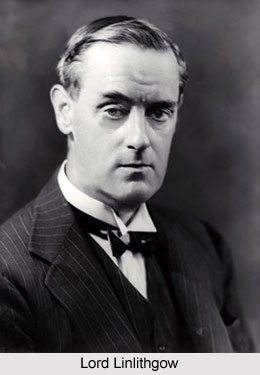 Government of India Act 1935 was among the last acts of governance passed by the British Government in India during the inter-war period. It basically sought to grant greater regional autonomy to the provinces of British India and ending the system of diarchy which was in operation under the British.
Government of India Act 1935 was among the last acts of governance passed by the British Government in India during the inter-war period. It basically sought to grant greater regional autonomy to the provinces of British India and ending the system of diarchy which was in operation under the British.
Background of Government of India Act 1935
For a long time since the late nineteenth century, Indians had been demanding a greater role in Governance. Following Indian involvement on part of the British in the First World War, there was felt a greater need to involve the Indians in administration by means of some kind of constitutional change. This resulted in the Government of India act of 1919 which introduced the system of diarchy. By means of this system, certain areas of government were placed in the hands of ministers responsible to the provincial legislature, while others were retained in the hands of officials responsible to the British-appointed provincial Governor. However, this proved greatly unsatisfactory as even in those areas where the rulers were given autonomy, the purse strings were controlled by the British hence rendering them helpless to exercise and great independence.
Formulation of Government of India Act 1935
After the third Round table conference was unsuccessful, the British Government established a Joint Select Committee with the task of formulating new Act for India. The Committee consisted of sixteen members from the House of Commons and House of Lords, twenty representatives for British India and seven members from the small princely states of India. The president of the committee was Lord Linlithgow. The Committee worked for after a year and a half and finally came out with a draft bill on February 5, 1935. The Bill was discussed for a period of forty-three days in the House of Commons and for thirteen days in the House of Lords. The bill was finally signed by King of England in July 1935 and was enacted as Government of India Act of 1935.
Terms of Government of India Act 1935
The Government of India Act allowed greater freedom in administration to the Indian rulers. The British rulers promised a Federation of India, comprising both the provinces and the states. There was to be the system of direct elections, thus increasing the franchise from seven million to thirty-five million people. A partial re-organisation of the provinces was also provided for which was- separation of Sind from Bombay; separation of Bihar and Orissa into two separation provinces; separation of Burma from India; separation and establishment of Aden as a separate colony. The membership of the provincial assemblies was altered so as to include more elected Indian representatives, who were now able to form majorities and be appointed to form governments. A Federal Court was also to be established.
Following the passage of the Act, those parts which intended to establish the Federation of India never came into being as there was opposition from the rulers of the princely states. The remaining parts of the Act came into force in 1937, when the first elections under the Act were also held.



















